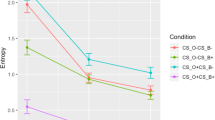Abstract
The accompanying article introduces highly transparent grapheme-phoneme relationships embodied within a Periodic table of decoding cells, which arguably presents the quintessential transparent decoding elements. The study then folds these cells into one highly transparent but simply stated singularity generalization—this generalization unifies the decoding cells (97% transparency). Deeper, the periodic table and singularity generalization together highlight the connectivity of the periodic cells. Moreover, these interrelated cells, coupled with the singularity generalization, clarify teaching targets and enable efficient learning of the letter-sound code. This singularity generalization, in turn, serves as a model for creating unified but easily stated subordinate generalizations for any one of the transparent cells or groups of cells shown within the tables. The article then expands the periodic cells into two tables of teacher-ready sample word lists—one table includes sample words for the basic and phonogram vowel cells, and the other table embraces word samples for the transparent consonant cells. The paper concludes with suggestions for teaching the cellular transparency embedded within reoccurring isolated words and running text to promote decoding automaticity of the periodic cells.
Similar content being viewed by others
References
Allington, R. L., & McGill-Franzen, A. (Eds.). (2013). Summer reading: closing the rich/poor reading achievement gap. New York: Teachers College Press.
Arnesen, A., Braeken, J., Baker, S., Meek-Hansen, W., Ogden, T., & Melby-Lervag, M. (2016). Growth of oral reading fluency in a semitransparent orthography: concurrent and predictive relations with reading proficiency in Norwegian, grades 2-5. Reading Research Quarterly, 52(2), 177–201. https://doi.org/10.1002/rrq.159.
Baker, E. A. (2017). Apps, iPads, and literacy: examining the feasibility of speech recognition in a first-grade classroom. Reading Research Quarterly, 52(3), 291–310. https://doi.org/10.1002/RRQ.170.
Betts, E. A. (1955). What about phonics? Education, 75(May), 547–559.
Brown, E. M. (1930). The value of phonics. New York State Education, 18(November), 266–267.
Clymer, T. (1996/1963). The utility of phonic generalizations in the primary grades. The Reading Teacher, 50(3), 182–187. (Original work published 1963).
Duke, N. K. (2014, April 16). Limitations of broad phonics generalizations: when two vowels go walking, the first one doesn’t necessarily do the talking! http://www.literacyworldwide.org/blog/literacy-daily/2014/04/16/limitations-of-broad-phonics-generalizations-when-two-vowels-go-walking-the-first-one-doesn-t-necessarily-do-the-talking.
Gates, A. I. (1928). New methods in primary reading. New York: Macmillan.
Hanna, P. R., Hanna, J. S., Hodges, R. E., & Rudorf, E. H. (1966). Phoneme-grapheme correspondence as clues to spelling improvement. Washington, DC: United States Department of Health, Education, and Welfare.
Hintikka, S., Landerl, K., Aro, M., & Lyytinen, H. (2008). Training reading fluency: is it important to practice aloud and is generalization possible? Annals of Dyslexia, 58(1), 59–79. https://doi.org/10.1007/s11881-008-0012-7.
Johnston, F. P. (2001). The utility of phonics generalizations: let’s take another look at Clymer’s conclusions. The Reading Teacher, 55(2), 132–143.
Kress, E., & Fry, E. B. (2015). The reading teacher’s book of lists (6th ed.). Hoboken: Jossey-Bass.
Lightman, A. (2013). The accidental universe: the world you thought you knew. New York: Vintage Books.
Meese, R. L. (2016). We’re not in Kansas anymore: the TOTO strategy for decoding vowel pairs. The Reading Teacher, 69(5), 549–552. https://doi.org/10.1002/trtr.1393.
Paige, D. D., Rasinski, T. V., & Magpuri-Lavell, T. (2012). Is fluent, expressive reading important for high school readers? Journal of Adolescent & Adult Literacy, 56(1), 67–76. https://doi.org/10.1002/JAAL.00103.
Pei, M. (1966). Glossary of linguistic terminology. New York: Columbia University Press.
Randall, L. (2015). Dark matter and the universe: the astounding interconnectedness of the universe. New York: HarperCollins.
Rasinski, T. (2017). Readers who struggle: why many struggle and a modest proposal for improving their reading. The Reading Teacher, 70(5), 519–524. https://doi.org/10.1002/trtr.1533.
Sayeski, K. L., Earle, G. A., Eslinger, R. P., & Whitenton, J. N. (2016). Teacher candidates’ mastery of phoneme-grapheme correspondence: massed versus distributed practice in teacher education. Annals of Dyslexia, 67(1), 26–41. https://doi.org/10.1007/s11881-016-0126-2.
Seidenberg, M. (2017). Language at the speed of sight: how we read, why so many can’t, and what can be done about it. New York: Basic Books.
Stahl, S., Duffy-Hester, A., & Stahl, K. (1998). Everything you wanted to know about phonics (but were afraid to ask). Reading Research Quarterly, 33(3), 338–355. https://doi.org/10.1598/RRQ.33.3.5.
van Gorp, K., Segers, E., & Verhoeven, L. (2017a). Enhancing decoding efficiency in poor readers via a word identification game. Reading Research Quarterly, 52(1), 105–123. https://doi.org/10.1002/rrq.155.
van Gorp, k., Segers, E., & Verhoeven, L. (2017b). The role of feedback and differences between good and poor decoders in a repeated word reading paradigm in first grade. Annals of Dyslexia, 67 (1), 1-25.
Willingham, D. T. (2017). The reading mind: a cognitive approach to understanding how the mind reads. San Francisco: Jossey-Bass.
Willis, J. (2006). Research-based strategies to ignite student learning. Alexandria, Virginia: ASCD.
Yoncheva, Y., Wise, J., & McCandliss, B. (2015). Hemispheric specialization for visual words is shaped by attention to sublexical units during initial learning. Brain and Language, 145-146(June–July), 23–33. https://doi.org/10.1016/j.bandl.2015.04.001.
Zeno, S. M., Ivens, S. H., Millard, R. T., & Duvvuri, R. (1995). The educator’s word frequency guide. Brewster: Touchtone Applied Science Associates.
Ziegler, J. C., & Goswami, U. (2005). Reading acquisition, developmental dyslexia, and skilled reading across languages: a psycholinguistic grain size theory. Psychological Bulletin, 131(3), 3–29. https://doi.org/10.1037/0033-2909.131.1.3.
Author information
Authors and Affiliations
Corresponding author
Rights and permissions
About this article
Cite this article
Gates, L. Elegant grapheme-phoneme correspondence: a periodic chart and singularity generalization unify decoding. Ann. of Dyslexia 68, 69–83 (2018). https://doi.org/10.1007/s11881-017-0150-x
Received:
Accepted:
Published:
Issue Date:
DOI: https://doi.org/10.1007/s11881-017-0150-x




